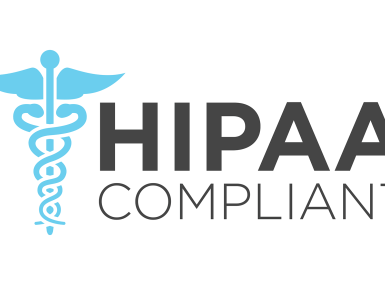How technology drives game-changing workforce satisfaction
Upcoming Events
Related News

From our partnersThis blog post is sponsored by NACo partner Netsmart. Discover how extending Medicaid funding to incarcerated individuals in county jails can improve their health, mental health, and overall safety. |
County behavioral health and human services agencies and local health departments have been challenged as never before over the past few years. Faced with a worldwide pandemic and an unprecedented demand for services, they have found creative and innovative ways to continue to positively impact and improve the health of their clients. Most organizations have done this in spite of major obstacles, including significant workforce recruitment and retention challenges.
In a recent NACo webinar, I was joined by Tom Herzog, Netsmart chief operating officer and Denny Morrison, Ph.D., Netsmart chief clinical advisor to outline how EHRs have evolved from data repositories to platforms that help drive clinical, financial and operational processes, efficiencies and decision-making.
We were joined by David Weden, chief administrative officer at Integral Care, the mental health and intellectual and developmental disabilities authority for Travis County, Texas. Integral Care supports adults and children with ongoing counseling for mental illness and substance use disorders, as well as services for intellectual and developmental disabilities. Last year, Integral Care provided 29,000 individuals with more than 500,000 services.
Setting the stage: innovation and usability
Herzog described an environment of rapid change and evolution in healthcare. “However fast things may have moved before, they are going to move significantly faster from this point forward.” He described this transition as moving into the “achievability” era of healthcare that includes convergence, commoditization and connectedness.
He also discussed how artificial intelligence (AI) is changing the workplace and workforce, “bringing us data at the right time, in the right way and the right persona.”
It’s important to note the value of technology in helping “bridge the gap” as providers face three unprecedented challenges:
- Increased demand for access to behavioral health services
- Large numbers of openings in health and human services
- High levels of turnover
Most providers were facing these challenges prior to the pandemic. However, the long- term impact of the COVID-19 pandemic has only exacerbated the strain on health and human services agencies, and local health departments.
How usability can help attract and retain staff
Clinicians often spend a tremendous amount of time – sometimes up to 50% of their workday – creating documentation and progress notes. It’s a complicated process because documentation standards are very specific and can vary depending on the funding source or program for which the service is provided. Advanced technologies, such as artificial intelligence and natural language processing, can reduce complexity and increase satisfaction for clinicians, caseworkers and, by extension, the clients they serve.
The technology that clinicians and providers use in their professional lives should be compared to the technology that they use every day in their personal lives. In other words, the process of writing a progress note should be as easy as buying something on Amazon.
Dr. Denny Morrison pointed out the importance of user-centered design that includes everything from an organization’s EHR to its website. He emphasized that this end-user perspective needs to consider the needs of persons with visual, auditory, motor, speech or cognitive disabilities.
Combating turnover with technology that clinicians like
In November 2021, David Weden saw Integral Care’s five-year staff turnover rate increase from 20-25% to over 36%. Technology wasn’t the only issue the organization addressed – measures to increase pay, increase workplace safety, support work-life balance and other issues were also enacted. Weden describes how his organization harnesses the power and capabilities of Integral Care’s Netsmart EHR to help clinicians save time and reduce manual processes – keys to making their jobs fulfilling and allowing them to spend more time with clients.
Incorporating artificial intelligence (AI)
Documentation and coding – Integral Care tested technology that allows clinicians to take notes during a session, then use AI to suggest language that can then be edited to create documentation that meets the appropriate standards. The results have been very promising – clinicians using the technology completed their notes within two hours of providing services, with users reporting that completion took about three minutes once they started creating a note. AI is also used to scan the content of notes and suggest CPT billing codes.
Assessments – AI also supports more accurate assessments. Weden cited the example of schizophrenia diagnosis, where AI prompts clinicians with additional questions to ask about historical trauma and substance use history. One result is that Integral Care has reduced by 50% instances of racial disparity in over-diagnosing Black males with schizophrenia.
“These results reinforce the value of the technology with our clinicians,” Weden said. “They can see the positive impact because it can be measured.”
Automating processes
National Outcome Measures (NOMS)– Federal grants require that NOMS assessment data must be entered in the federal database. By writing a program that extracts the assessment data from the EHR without re-entering the data, Integral Care saves more than 80 hours of clinicians’ time per month. Based on feedback like this and providers like Integral creating unique solutions, SAMHSA will start accepting batch uploads of NOMS data in January of 2023.
Creating forms bundles – Managing multiple programs means Integral Care clinicians are required to complete different sets of forms for each one. Creating forms bundles within the EHR means clinicians simply click on the program for which they’re providing services and a list of forms is displayed. Forms are prepopulated with information that has already been entered.
Self-assessments – Automated alerts highlight areas of concern (such as suicidality) in self-assessments completed by individuals, allowing clinicians to quickly see there may be a problem and focus on these issues promptly.
Dashboards – The Integral Care IT team created dashboards to give clinicians instant insights into how individuals under their care are progressing and further reinforce the value of their work.
Ongoing support and education
“The process of improving our EHR is continual and will always be changing and evolving,” Weden said. “The key is to have multiple ways to communicate with providers, so they know what’s going on and they can give us their feedback.”
To alert clinicians to upcoming improvements, the application support team hosts a monthly Talk with the Techs forum that covers:
- Latest updates to the EHR
- Known issues, with tips and tricks to address them
- Open dialogue and answers to questions regarding updates
- Previews of the technology roadmap and an overview of upcoming pilots
These sessions are recorded and available on the website, as well as through a link in the monthly EHR newsletter, which covers some of the same topics. The goal is to make information available in a variety of forms, so clinicians can access resources whenever and wherever works best for them.
Throughout his organization’s journey to usability and optimization, Weden believes listening to the employees was the key.
“They were adamant that they wanted to see improvements moving forward,” he said. “Integral Care really strives and thrives on innovation. We were ready to do anything we could to help them in their work, to support them and make them feel supported. And that has helped us with our workforce challenges.”
Watch the webinar Optimizing County Electronic Health Records for Game-Changing Workforce Satisfaction.
Post Sponsor

Related News

Counties and Railroads: Shared Priorities for the Next Surface Transportation Bill
County leaders from across the country have a vital opportunity to ensure their infrastructure priorities are front and center.

House committee passes local broadband permitting preemption bills
The American Broadband Deployment Act of 2025 would enact new restrictions on a variety of state and local land use and zoning authorities pertaining to the deployment of telecommunications infrastructure.






















